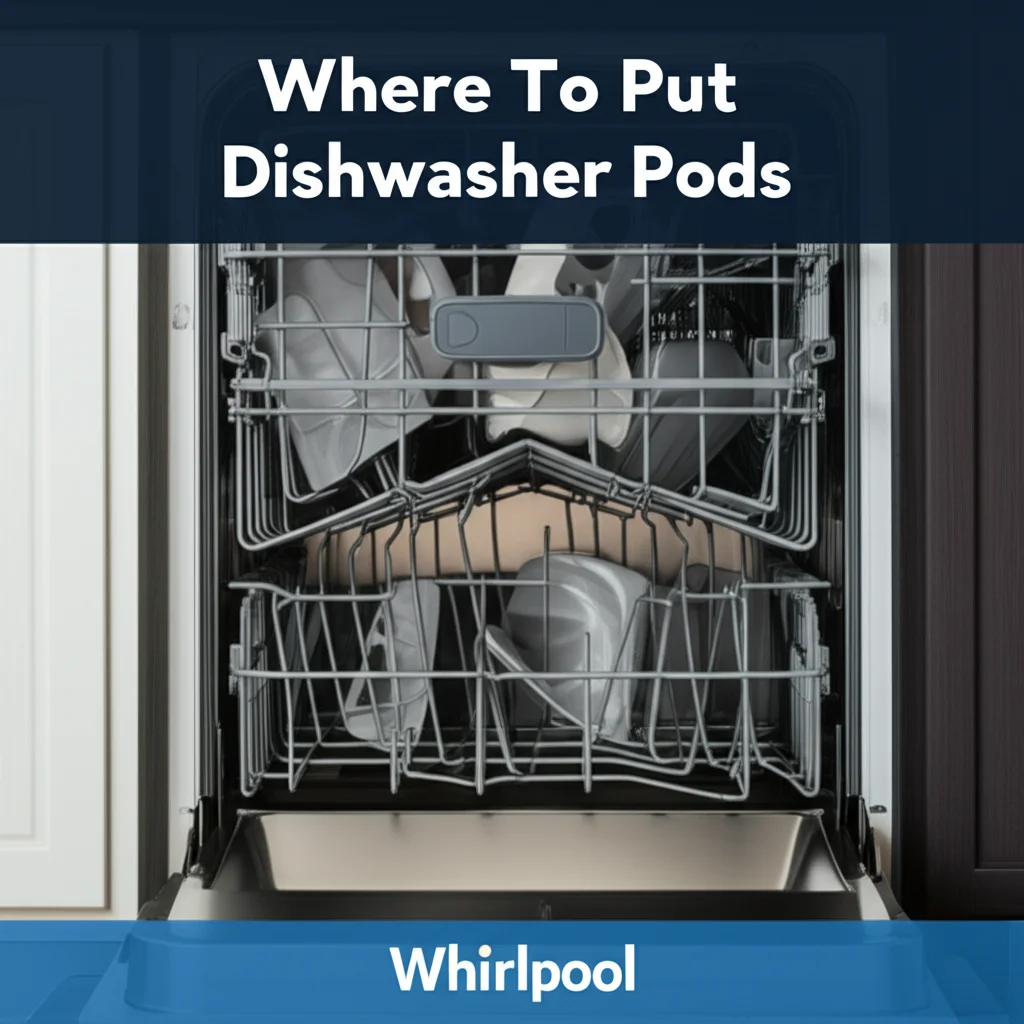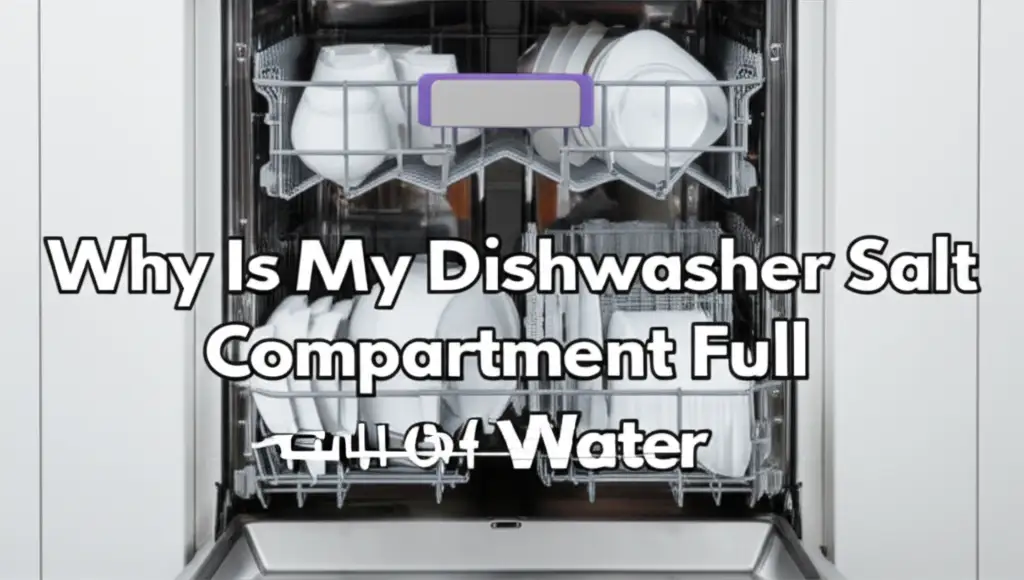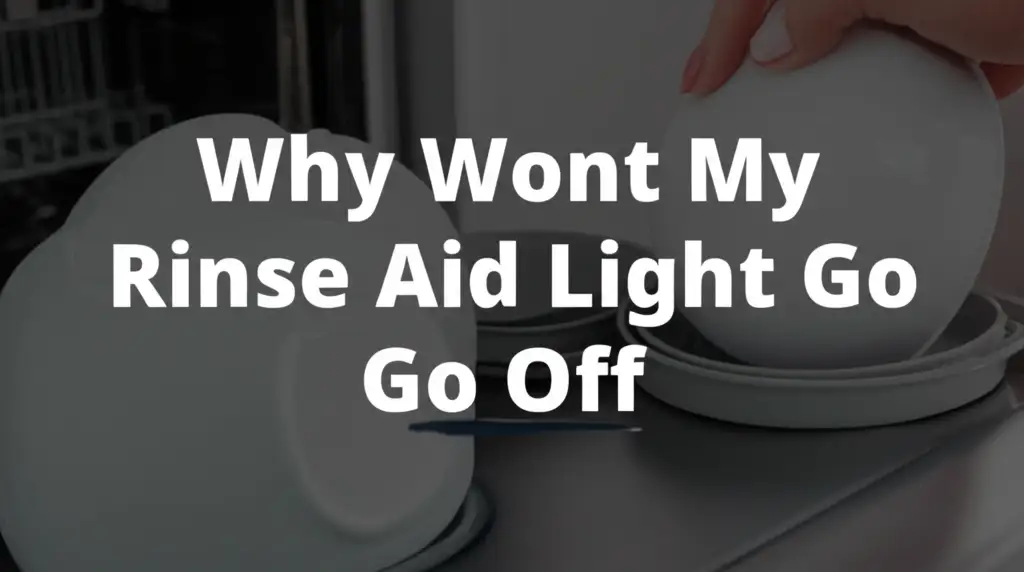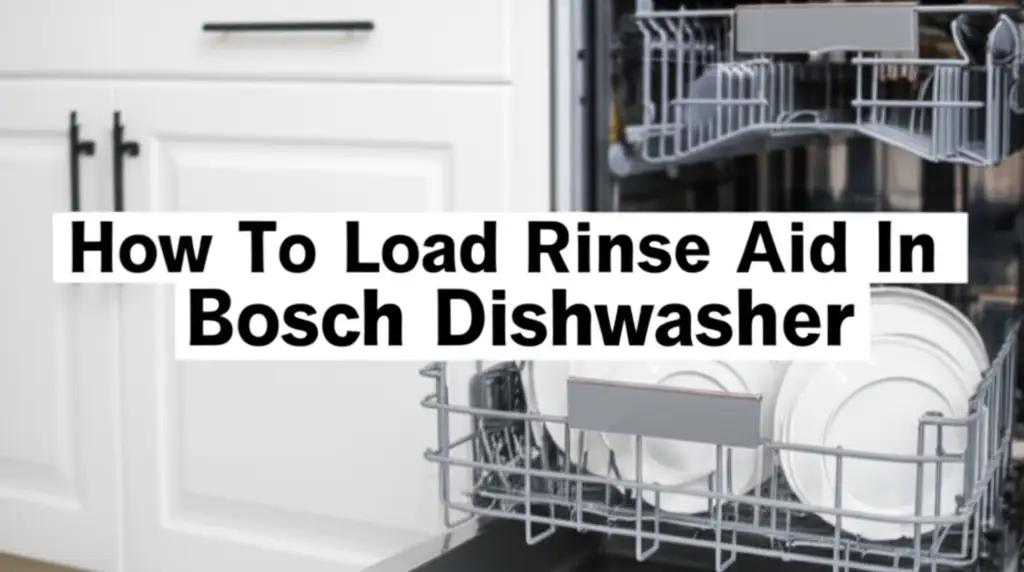· Katria Melrose · Dishwasher Maintenance · 20 min read
Is The Dishwasher Tablet Meant To Fall Out
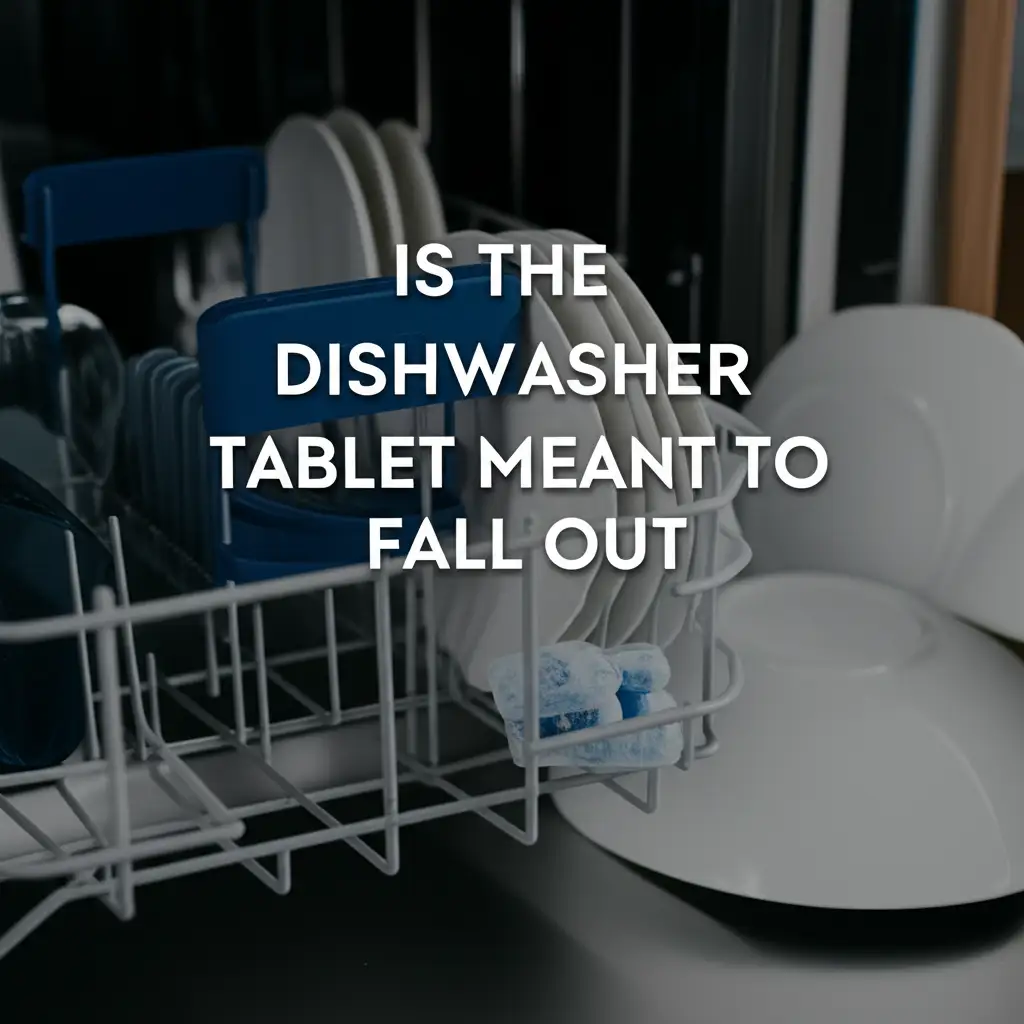
Understanding Your Dishwasher: Is The Tablet Meant To Fall Out?
Have you ever opened your dishwasher after a cycle, only to find the detergent tablet sitting at the bottom, still mostly intact? It is a frustrating sight. Many of us wonder: is the dishwasher tablet meant to fall out of its dispenser, or is something wrong? The truth is, your dishwasher tablet should not fall out prematurely.
Proper detergent dispensing is critical for truly clean dishes. When the tablet exits its compartment too early, it affects the entire washing process. This article explores why a dishwasher tablet might fall out before it should. We will discuss how your dishwasher’s dispenser works. We will then explain the common reasons for early release. Finally, we will provide practical solutions to ensure your dishwasher tablet dissolves at the correct time. This helps you achieve sparkling results every time.
Takeaway
- Ideal Dispensing: A dishwasher tablet should stay in its dispenser until the main wash cycle begins, releasing at the optimal time for effective cleaning.
- Common Causes: Premature tablet release often results from dispenser blockages, machine issues, or incorrect loading.
- Simple Solutions: Check for obstructions, clean the dispenser, ensure proper water temperature, and load dishes correctly to fix the problem.
Clear and Concise Answer to Your Main Query
No, the dishwasher tablet is not meant to fall out of its dispenser prematurely. The dispenser is designed to hold the tablet until a specific point in the main wash cycle. This timed release ensures the detergent is available when the water reaches the correct temperature. This allows for optimal cleaning performance.
The Dishwasher Tablet Dispenser: How It Works
Understanding your dishwasher’s dispenser is simple. It plays a key role in getting your dishes clean. The dispenser is more than a small door. It is a precise timing device. It releases the detergent at the right moment. This ensures effective cleaning.
Most dishwashers have a main wash cycle and sometimes a pre-wash. The tablet must dissolve during the main wash. This is when the water is hot enough. The spray arms are moving. This combination cleans your dishes best. A small latch or spring mechanism holds the tablet. This latch opens when signaled by the dishwasher’s control board. This signal usually comes when the main wash begins. This ensures the detergent is used efficiently.
When the dispenser works correctly, the tablet stays put. It waits for the perfect moment. Then, the door opens. The tablet drops into the hot water. It dissolves quickly. This provides cleaning power to the wash cycle. If the tablet falls out too soon, it misses this critical timing. The detergent can get washed away during the pre-wash cycle. This leaves little cleaning power for the main wash. This is why proper dispenser function matters.
When The Dishwasher Tablet Falls Out Prematurely: Common Causes
When a dishwasher tablet falls out too soon, it indicates a problem. This issue prevents effective cleaning. Several common reasons cause this premature release. You can often identify and fix these issues yourself. I have seen many people struggle with this issue, and the solution is often quite simple.
Overloading or Improper Loading
One frequent reason for a tablet falling out is how you load the dishwasher. Large dishes or utensils can block the dispenser door. If a plate, bowl, or cutting board is in the way, the dispenser cannot open fully. The tablet then gets dislodged. It falls to the bottom of the tub. This often happens during the initial fill or spray.
Ensure no dishes obstruct the dispenser. Place larger items in the lower rack. Position them away from the detergent compartment. Tall items should not lean against the door. Proper loading allows the dispenser to open freely. This lets the tablet drop into the wash cycle at the correct time. Check your user manual for tips on loading your specific model. Proper loading is vital for the how to use dishwasher effectively.
Dispenser Malfunction
Sometimes, the dispenser itself has an issue. The latch might be sticking. The spring could be weak. Food particles or detergent residue can build up around the dispenser door. This buildup can prevent the latch from closing properly. It can also stop it from opening completely. If the door does not close tightly, the tablet can fall out. This occurs as soon as the machine starts to vibrate or fill with water.
Inspect the dispenser for any visible damage. Look for cracks or misalignments. Clean the dispenser area regularly. Use a damp cloth to wipe away residue. A small brush can help remove stubborn grime. This ensures the door opens and closes smoothly. If the problem persists, it may be an internal mechanical issue. This could require professional repair. For issues with the door not opening, you might find more information on why is my dishwasher tablet dispenser not opening.
Incorrect Tablet Placement
How you place the tablet matters. Some tablets are larger than others. If a tablet is too big for the compartment, it can get jammed. It may prevent the door from closing completely. This leaves a small gap. The tablet can then slip out early. Ensure the tablet fits snugly inside the dispenser. It should not stick out.
Push the tablet firmly into its spot. Make sure it lies flat. Some dispensers have a specific orientation for tablets. Check your dishwasher manual for proper tablet placement. Using the correct size and type of tablet for your dispenser is important. This prevents it from falling out.
Water Temperature Issues
Water temperature plays a big part in how well detergent works. Dishwashers need hot water to activate the detergent enzymes. If the water entering your dishwasher is too cold, the tablet may not dissolve properly. It might fall out and remain mostly intact. The cold water does not help it break down. The detergent can then clump. It can just sit at the bottom of the tub.
Ensure your water heater is set to at least 120°F (49°C). Run your kitchen faucet on hot for a minute before starting the dishwasher. This purges cold water from the supply line. It ensures hot water enters the dishwasher immediately. This helps the tablet dissolve effectively once released.
Water Pressure Issues
Low water pressure can also cause problems. Your dishwasher relies on adequate water pressure. This pressure helps activate the dispenser mechanism. It also helps spray water effectively. If the water pressure is too low, the dispenser may not open fully or at the right time. The tablet might then fall out. It can also fail to dissolve correctly.
Check your home’s water pressure. You can use a pressure gauge on an outdoor spigot. Consult a plumber if you suspect low water pressure. Sometimes, issues are specific to the dishwasher’s water inlet valve. A faulty valve can restrict water flow to the appliance.
Using the Wrong Detergent Type or Form
While most articles focus on tablets, using the wrong detergent type can cause issues. If you are using liquid or gel detergent in a dispenser designed for tablets, it might just pour out too fast. Similarly, if a tablet is not suitable for your specific machine, it might not dispense or dissolve correctly. Always use the detergent type recommended for your dishwasher model. You can also explore options like Can you use dishwasher liquid in dishwasher if tablets are consistently an issue.
Impact of a Prematurely Released Dishwasher Tablet
When a dishwasher tablet falls out early, it affects more than just the tablet. It directly impacts your dishes. The results are often disappointing. You run a full cycle. You expect clean, sparkling dishes. Instead, you get grime, spots, or residue. I have experienced this frustration myself. It feels like wasted effort and water.
Poor Cleaning Results
The most obvious impact is poor cleaning. Dishwashers have different stages: pre-wash, main wash, and rinse. Each stage has a purpose. The pre-wash cycle typically uses cooler water. It just rinses loose food particles. The main wash is where the real cleaning happens. This cycle uses hot water. It has intense spray action. Detergent should release during this main wash.
If the tablet falls out early, it dissolves during the pre-wash. The detergent is then used up too soon. It gets flushed away with the initial rinse water. By the time the main wash starts, there is little to no detergent left. Your dishes are essentially washed with plain water. This leaves them dirty, greasy, or still covered in food debris. The powerful cleaning agents are gone before they can do their job.
Residue on Dishes and Appliance Interior
A prematurely released tablet often leads to residue. The tablet might dissolve partially. The undissolved parts can redeposit onto your dishes. This leaves a white, chalky film. This is especially true on glasses and dark plastics. This residue is unappealing. It can also be stubborn to remove.
Beyond the dishes, the appliance itself can suffer. Undissolved detergent can accumulate. It collects in the bottom of the tub. It gets stuck on the spray arms or filter. This buildup reduces the dishwasher’s efficiency. It can even cause clogs over time. You might notice your dishwasher looks less clean. It might even smell bad. This happens because detergent is not properly rinsed away.
Wasted Detergent and Resources
Each dishwasher tablet costs money. When it falls out early, it is wasted. You are paying for a product that does not perform its function. This means you need to rewash dishes. This doubles your water and energy consumption. It also means you use more detergent.
The design of modern dishwashers is precise. They use water and energy efficiently. This efficiency depends on each part working correctly. This includes the detergent dispenser. When the dispenser fails, the whole system becomes inefficient. It costs you more money in the long run. Ensuring the tablet releases properly saves you money. It also helps conserve resources.
Troubleshooting Your Dishwasher Tablet Dispenser Issues
Finding a solution to a prematurely falling dishwasher tablet is possible. I have helped many friends troubleshoot these problems. Often, the fixes are simple. You can perform several checks and adjustments yourself. These steps will help your dishwasher perform better. They will also ensure your dishes come out clean.
Check Your Loading Habits
The first step is to check how you load your dishwasher. This is a very common cause. Large dishes, like platters or cutting boards, can block the dispenser. Utensils or tall items might lean against the door. This prevents it from opening fully.
Before starting a cycle, open the dispenser door manually. Make sure it swings open without hitting any dishes. Adjust any items that are in the way. Place larger items in the lower rack. Position them to give the dispenser a clear path. This simple check can solve the problem instantly. Ensure there is enough space for the spray arms to rotate as well.
Inspect and Clean the Dispenser
Residue buildup is a major culprit. Detergent and food particles can accumulate around the dispenser. This can cause the latch to stick. It can prevent the door from sealing properly. If the door does not close tightly, the tablet can fall out.
Open the dispenser. Look closely at the edges and hinges. Are there any sticky deposits? Use a warm, damp cloth to wipe the area clean. A toothbrush can help scrub away stubborn residue. Pay special attention to the latch mechanism. Make sure it moves freely. Clean your dishwasher regularly. This helps prevent future buildup. You can learn more about general cleaning by checking articles like how to clean dishwasher with vinegar.
Verify Water Temperature and Pressure
Hot water is essential for dissolving detergent. If the water is too cold, the tablet may not break down properly. It might just sit at the bottom of the tub. Dishwashers generally need water at least 120°F (49°C).
Run your kitchen sink hot water for a minute before starting the dishwasher. This ensures hot water fills the machine immediately. If your dishes are still not clean, check your water heater setting. Low water pressure can also be an issue. It can affect the dispenser mechanism. Ensure your home has adequate water pressure. If you suspect low pressure, a plumber can help.
Using the Right Tablet
Not all dishwasher tablets are the same. Some are larger or shaped differently. Make sure the tablet you use fits properly into your dispenser. It should sit flat and allow the door to close completely. Forcing a tablet that is too big can cause the door to stay ajar.
Consider the type of tablet. Some are designed for specific wash cycles or water conditions. If you have hard water, you might need a different formulation. Read the detergent packaging. It often provides guidance on tablet size and usage. Choosing the correct tablet ensures it functions as intended.
Consider a Pre-Wash Cycle (or not)
Some dishwashers have a pre-wash compartment for liquid or powder detergent. This is separate from the main tablet dispenser. If you use this, ensure you put the tablet in the main dispenser. Never put a tablet in the pre-wash compartment. It will dissolve too early.
Some dishwashers have a pre-wash cycle built into the main cycle. If your tablet is consistently falling out, and your dishes are not getting clean, you might skip a separate pre-wash option if you manually select cycles. The detergent should release during the hot, main wash cycle. This maximizes its cleaning power.
Check Spray Arms and Filters
While not directly related to the dispenser, blocked spray arms or a dirty filter affect overall cleaning. This can make it seem like the tablet did not work. If the spray arms cannot rotate freely, water distribution is poor. If the filter is clogged, water cannot drain properly. This leads to residue and poor wash results.
Remove the lower spray arm. Check its nozzles for blockages. Use a toothpick to clear any debris. Pull out the dishwasher filter. Rinse it under running water. Use a brush to remove food particles. For more details on maintaining this part, you can read how to clean filter in dishwasher. Regularly cleaning these components improves water flow. This helps ensure the detergent dissolves and circulates effectively.
Maintaining Your Dishwasher for Optimal Performance
Regular maintenance helps your dishwasher run well. It prevents issues like the tablet falling out too soon. A well-maintained dishwasher also cleans better and lasts longer. Taking simple steps can make a big difference. I always advise people to treat their appliances well.
Regular Cleaning of Dispenser, Filter, and Spray Arms
Routine cleaning is the first line of defense. The dispenser can get sticky from detergent residue. Food particles can clog the filter. Hard water can block spray arm nozzles. These issues hinder performance.
- Dispenser: Wipe down the dispenser door and surrounding area after each cycle. Use a damp cloth. Remove any visible detergent residue or food bits.
- Filter: Check your dishwasher filter weekly. Remove it and rinse it under running water. Scrub away any stubborn food particles with a brush. This prevents blockages that affect water circulation. You can learn more about how often should you clean your dishwasher filter.
- Spray Arms: Inspect the spray arm holes monthly. Use a toothpick or small wire to clear any clogged nozzles. Ensure the arms spin freely.
Using Rinse Aid Regularly
Rinse aid is not just for spot-free dishes. It also helps your dishwasher perform better. Rinse aid reduces the surface tension of water. This allows water to sheet off dishes. This promotes faster drying. It also helps prevent water spots.
Beyond spotless dishes, rinse aid helps prevent residue buildup. It can prevent mineral deposits inside the dishwasher. This includes the dispenser area. Many modern tablets include rinse aid. However, adding extra rinse aid to your dishwasher’s rinse aid dispenser is often beneficial. This is especially true if you have hard water.
Running Maintenance Cycles
Your dishwasher works hard. It benefits from a deep cleaning cycle. Run an empty hot wash cycle once a month. Use a dishwasher cleaner or a cup of white vinegar. Place the vinegar in a bowl on the top rack. This helps remove grease, grime, and mineral deposits. It keeps the internal components clean.
These maintenance washes address issues that lead to problems. They keep the internal workings clean. They prevent clogs. They ensure efficient water flow. This helps the detergent dispense and dissolve properly. Remember to also check and clean the dishwasher pump occasionally. This part handles water drainage. You can find useful tips on how to clean dishwasher pump.
Understanding Hard Water Effects
Hard water contains high mineral content. These minerals, like calcium and magnesium, can cause problems. They lead to limescale buildup inside your dishwasher. This buildup affects heating elements, spray arms, and even the dispenser.
If you have hard water, consider using a water softener. You can also use dishwasher detergents designed for hard water. Running regular cleaning cycles with vinegar or citric acid helps combat mineral deposits. Hard water makes it harder for detergent to dissolve and clean effectively. Addressing hard water ensures your dishwasher and detergent perform optimally.
Professional Servicing
Even with regular maintenance, dishwashers can develop issues. If you have tried all troubleshooting steps and the tablet still falls out, professional servicing might be needed. A technician can diagnose internal mechanical problems. These include faulty dispenser mechanisms or control board issues.
Do not hesitate to call a professional if you suspect a serious problem. Early intervention can prevent more costly repairs later. A technician can also recommend specific maintenance tips for your dishwasher model. They can ensure your appliance functions correctly. This gives you peace of mind and consistently clean dishes.
Alternative Solutions When Tablets Don’t Dispense Correctly
Sometimes, despite troubleshooting, your dishwasher tablet still does not dispense correctly. Or perhaps you are looking for a temporary fix. There are a few alternative methods people try. It is important to understand the pros and cons of these solutions. While not ideal, they can help in a pinch.
Placing Tablet in the Bottom of the Dishwasher
A common workaround is placing the tablet directly in the bottom of the dishwasher. This is done instead of using the dispenser. This method ensures the tablet is in the machine from the start. It will begin dissolving as soon as water enters the tub.
Pros:
- Immediate Release: The tablet starts dissolving right away.
- Simple: It is easy to do if the dispenser is broken.
Cons:
- Premature Detergent Use: The detergent gets used during the pre-wash phase. This means less cleaning power for the main wash.
- Poor Cleaning: Dishes may not get as clean. The main wash cycle lacks fresh detergent.
- Residue: Undissolved parts of the tablet can redeposit on dishes.
- Not Recommended for All Machines: Some dishwashers are very sensitive to early detergent release.
Generally, I recommend this only as a temporary solution. It is a last resort while you wait for a repair or replacement. For more on this, you can check why put dishwasher tablet in bottom of machine.
Using Liquid or Gel Detergent
If tablets are consistently an issue, consider switching to liquid or gel detergent. Most dishwashers have a separate compartment for these detergents. This compartment is usually smaller and might not have a complex release mechanism.
Pros:
- Easier Dispensing: Liquids and gels pour out easily. They are less prone to dispenser issues.
- Quick Dissolution: They dissolve instantly in water.
- Flexibility: You can often adjust the amount used.
Cons:
- Less Potent: Some liquid/gel detergents are less concentrated than tablets.
- More Messy: They can be messier to handle.
- No Pre-measured Dose: You must measure the amount yourself.
If your dishwasher only has a tablet dispenser, or you prefer tablets, this might not be a long-term solution. However, it can provide a good wash while you fix your tablet dispenser. For more insights on this, refer to Can you use dishwasher liquid in dishwasher.
Pre-dissolving Tablets
Some people try to pre-dissolve a tablet in a cup of hot water. They then pour this solution into the dishwasher at the start of the main wash. This is a very hands-on approach.
Pros:
- Ensures Dissolution: The tablet is fully dissolved.
- Timed Release (Manual): You control when the detergent enters.
Cons:
- Impractical: Requires you to monitor the dishwasher cycle.
- Risk of Burns: Handling hot water and chemicals.
- Not User-Friendly: Most people want convenience from a dishwasher.
This method is highly impractical for daily use. It defeats the purpose of an automatic appliance. It is not something I would recommend for regular use.
When to Consider Professional Help
If you have tried all the troubleshooting steps and alternative methods still yield poor results, it is time for professional help. A broken dispenser mechanism might need replacement. This often involves taking apart the inner door panel. This job is best left to a qualified appliance technician. They have the tools and expertise to diagnose the exact issue. They can replace faulty parts safely. Do not try to force repairs if you are unsure. This can cause more damage.
FAQ Section
Q1: Why does my dishwasher tablet not dissolve fully?
A dishwasher tablet might not dissolve fully due to cold water, low water pressure, or blockages. Ensure your water heater is set to 120°F (49°C) minimum. Run the hot water tap before starting the cycle. Check that spray arms are not clogged. Make sure dishes do not block the dispenser or spray. A dirty filter can also hinder water circulation.
Q2: Can I just throw the tablet in the bottom of the dishwasher?
You can throw the tablet in the bottom of the dishwasher as a temporary solution. However, it is not ideal. The tablet will dissolve too early, during the pre-wash cycle. This leaves little detergent for the main wash. Your dishes may not get properly clean. It is better to fix the dispenser issue for optimal results.
Q3: How do I know if my dishwasher dispenser is broken?
You know your dishwasher dispenser is broken if the door does not open during the cycle, if it opens too early, or if it does not latch properly. You might also see visible damage. If cleaning it does not fix the problem, or if you hear unusual noises from the dispenser area, it likely needs professional attention.
Q4: Does water temperature affect tablet dispensing?
Yes, water temperature significantly affects tablet dispensing and dissolution. Hot water is crucial for activating detergent enzymes. If the water is too cold, the tablet may not dissolve completely. It may just sit at the bottom of the tub. Ensure your dishwasher receives adequately hot water at the start of the cycle.
Q5: How often should I clean my dishwasher dispenser?
You should clean your dishwasher dispenser regularly, ideally after every few cycles or at least once a week. Wipe it down with a damp cloth to remove detergent residue. Use a small brush for sticky buildup. This prevents the latch from sticking and ensures smooth operation.
Q6: What if my dishwasher is overloaded, affecting the tablet?
An overloaded dishwasher can block the dispenser door. This prevents the tablet from releasing correctly. Ensure large items do not obstruct the dispenser’s opening path. Arrange dishes to allow the dispenser door to swing freely. Proper loading is essential for detergent to reach the wash cycle effectively.
Conclusion
The question “is the dishwasher tablet meant to fall out” has a clear answer: no, it is not. Your dishwasher tablet should remain securely in its dispenser. It must wait for the precise moment during the main wash cycle. This timed release is crucial. It ensures the detergent can do its job. It helps clean your dishes effectively. When a tablet falls out prematurely, it leads to poor cleaning and wasted detergent. This is a common and frustrating problem.
I have walked you through the common causes. These include improper loading, dispenser malfunctions, and water issues. I have also provided clear troubleshooting steps. By checking your loading habits and cleaning the dispenser, you can often fix the issue. Ensuring correct water temperature and pressure also helps. Remember, regular maintenance keeps your dishwasher performing at its best. This means cleaning the filter and spray arms. It also means running maintenance cycles. These simple steps lead to sparkling dishes. If problems persist, do not hesitate to seek professional help. A fully functional dishwasher dispenser is key to a clean and efficient kitchen. Take these steps to ensure your dishwasher works as it should. Enjoy consistently clean dishes every time.


